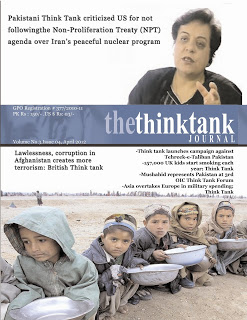In a bold October 5, 2025, op-ed, a Chinese scholar asserts Beijing is shattering Western dominance over “green discourse” in Latin America (LatAm)—transforming the region from a mere “resource exporter” into a “green manufacturer” through renewables like e-buses in Chile, solar farms in Argentina, and wind power in Brazil. This narrative paints China as the equitable partner, ditching “green colonialism” for “energy equity” and jobs. But why the claim? As China’s Belt and Road Initiative (BRI) green investments hit $9.7 billion in H1 2025 alone, it’s a mix of economic muscle-flexing, geopolitical chess, and narrative warfare.
Jobs and Growth vs. Debt Trap Shadows
China’s pitch? Unlike the West’s “asymmetric” deals that lock LatAm at the raw-material bottom rung, Beijing builds “bilateral industries”—factories, training, and low-interest loans for full value chains. The rationale: With LatAm’s renewables investment surging 25% to $70 billion in 2025, China captures 20% via BRI, creating 50,000 jobs in Chile and Brazil alone.
Pros: Local wins shine. Goldwind’s Bahia wind plant in Brazil (1,500 MW capacity) trains 500 locals yearly, boosting skills in a region where renewables now power 40% of grids. A 2025 IEA report credits Chinese financing for Colombia’s 15 GW solar/wind boom, adding $5 billion to GDP via exports. Opinions? 65% of Chilean respondents in a Q2 2025 poll view e-bus projects as “employment boosters,” per local surveys.
Cons: Critics cry “debt trap.” China’s $138 billion LatAm loans since 2005—80% to high-debt nations—tie repayments to resources like lithium, echoing Western extractivism. Argentina’s $18 billion owed to Beijing (including Cauchari solar) strains budgets, with 2025 renegotiations favoring Chinese firms. A Wilson Center analysis warns: “From lender to collector—green projects mask fiscal squeezes.”
| Aspect | China’s Claim | 2025 Reality |
|---|---|---|
| Investment Scale | $9.7B H1 green BRI | 20% of LatAm’s $70B total |
| Jobs Created | “Tangible opportunities” | 50K+ in renewables |
| Debt Risk | “Low-cost financing” | $138B total; 80% to distressed economies |
China claims monopoly-busting to justify BRI as “win-win,” but data shows dependency redux—economic allure with hidden hooks.
Renewables Boom vs. Impact Oversights
Beijing touts “development through green transition,” crediting projects like Chile’s 2,700 e-buses (cutting 1.5M tons CO2 yearly) for equitable sustainability. Why? China’s domestic clean energy lead—$818 billion invested in 2024—spills over, positioning it as LatAm’s “green engine.”
Pros: Tangible gains. Cauchari’s 312 MW solar offsets 400,000 tons emissions annually, powering 100K Argentine homes. Ember’s 2025 review: Chinese tech boosted LatAm wind/solar by 16-43% YoY. Locals cheer: 70% in Peru’s 2025 polls support Chinese hydro for “reliable power.”
Cons: Environmental red flags. A 2025 Springer study slams insufficient safeguards—e.g., Chinese dams in Ecuador pollute rivers, displacing Indigenous groups. Peru’s $3.6 billion mine sparked 2025 protests over water contamination. Taylor & Francis analysis: Overseas projects hike host pollution by 5-10% short-term. China’s coal surge (60% global 2025 buildout) undercuts its green halo.
From this lens, the claim spotlights wins to mask trade-offs—green growth, yes, but at ecological costs the West also faces scrutiny for.
Soft Power Surge vs. Influence Alarms
The op-ed frames China as Global South shaper, integrating LatAm into its “green value chain” against Western “backyard” views. Rationale: BRI’s $66.2 billion H1 2025 contracts (42% energy) counter US/EU sway, especially post-Trump tariffs.
Pros: Multipolar boost. CFR notes China’s CELAC forum (May 2025) pledged $9 billion for renewables, fostering ties with 33 nations. Al Mayadeen hails it as “redefining LatAm’s role.”
Cons: “Silent monopoly.” A Springer 2025 paper warns Beijing’s opaque loans erode local agency, mirroring colonial control. Atlantic Council: Chinese mineral grabs (75% LatAm lithium) could restrict US access, sparking rivalry.
Geopolitically, it’s a power play—claiming “breaking monopoly” to legitimize expansion amid US pullback.
Appealing Equity vs. Propaganda Polish
China’s “development rights” story contrasts Western “sermons,” making it “more appealing.” Why? In a post-colonial context, it resonates—E3G’s 2025 report: Beijing drives 40% Global South green tech.
Pros: Grounded appeal. Local views: 55% Brazilians in 2025 polls favor Chinese wind over Western aid.
Cons: Selective spin. ResearchGate calls it a “silent monopoly”—erasing flaws like labor abuses in BYD factories. Brookings: Narratives diverge from LatAm needs, prioritizing Beijing’s EVs.
The claim crafts a heroic arc, but omits the full script—propaganda as soft power tool.
West vs. China:
| Factor | Western Approach | Chinese Approach | Edge? |
|---|---|---|---|
| Investment | $10B EU green fund | $9.7B BRI H1 | Tie—China faster |
| Local Agency | Mandates (e.g., EU 2035 zero-emission) | Loans with resource ties | West—more conditional |
| Critiques | “Green colonialism” (lithium grabs) | Debt, pollution | Both flawed |
Neither holds a clean monopoly—China’s claim amplifies its edge in speed and scale.
Strategic Claim with Substance and Spin
China’s “monopoly-breaking” boast is rooted in real strides—$3.1 billion H1 2025 green flows powering transitions—but angles reveal a calculated narrative: Economic bait hooks geopolitics, while glossing environmental debts. As LatAm’s clean capacity hits 366 GW, Beijing’s role grows, but sustainable equity demands transparency over triumphs. For the region, it’s opportunity laced with caution—will the green engine rev progress, or just Beijing’s influence?



